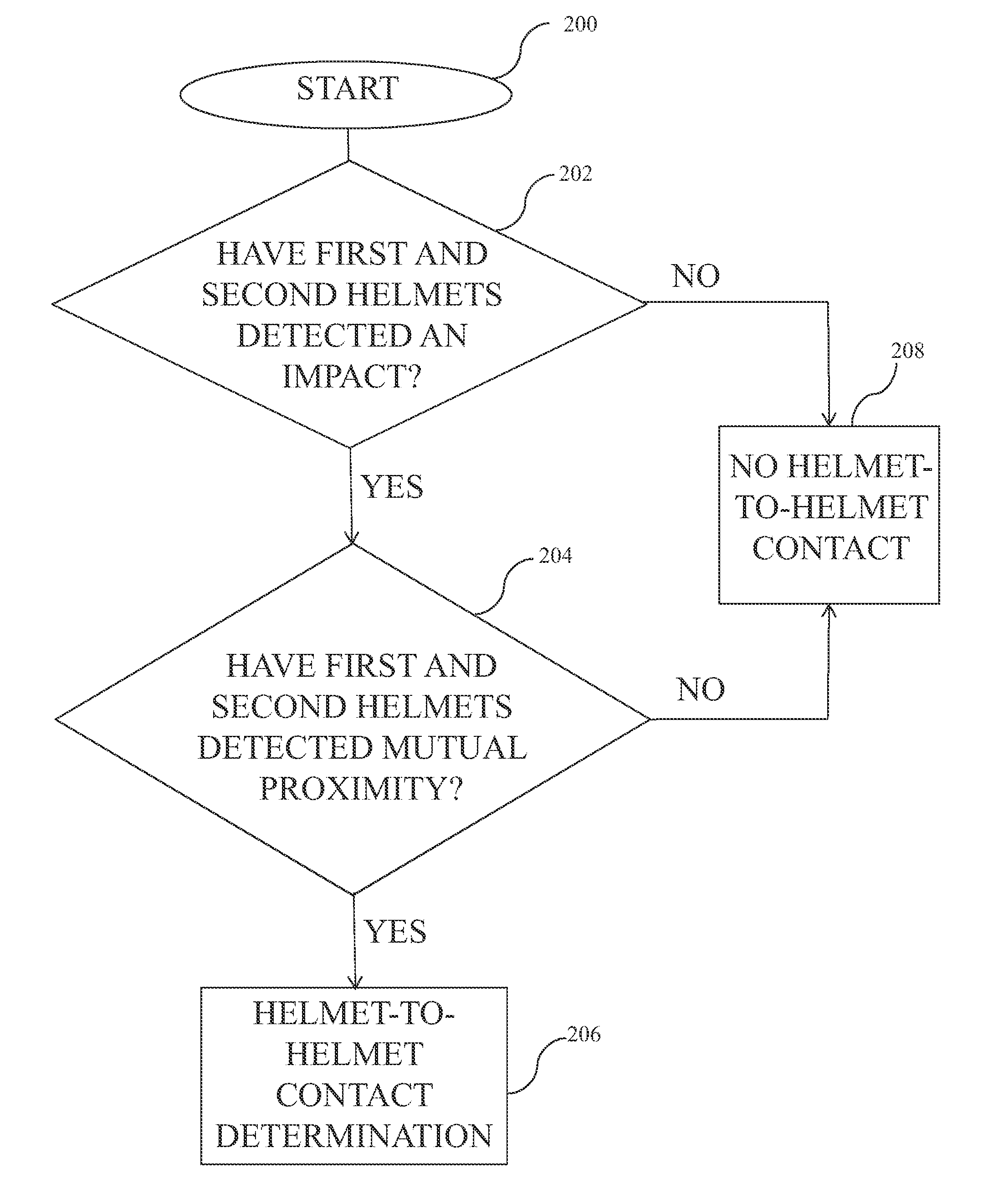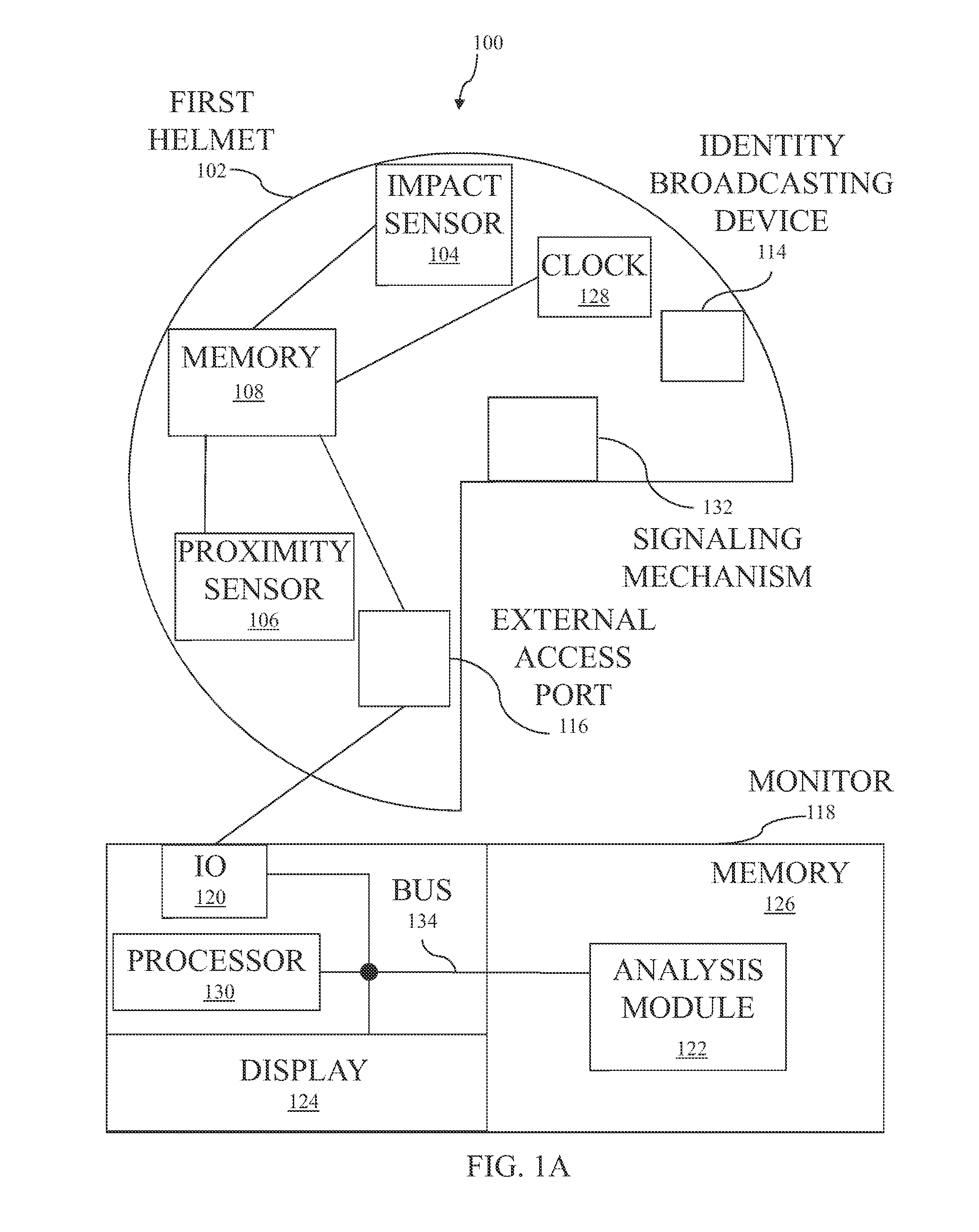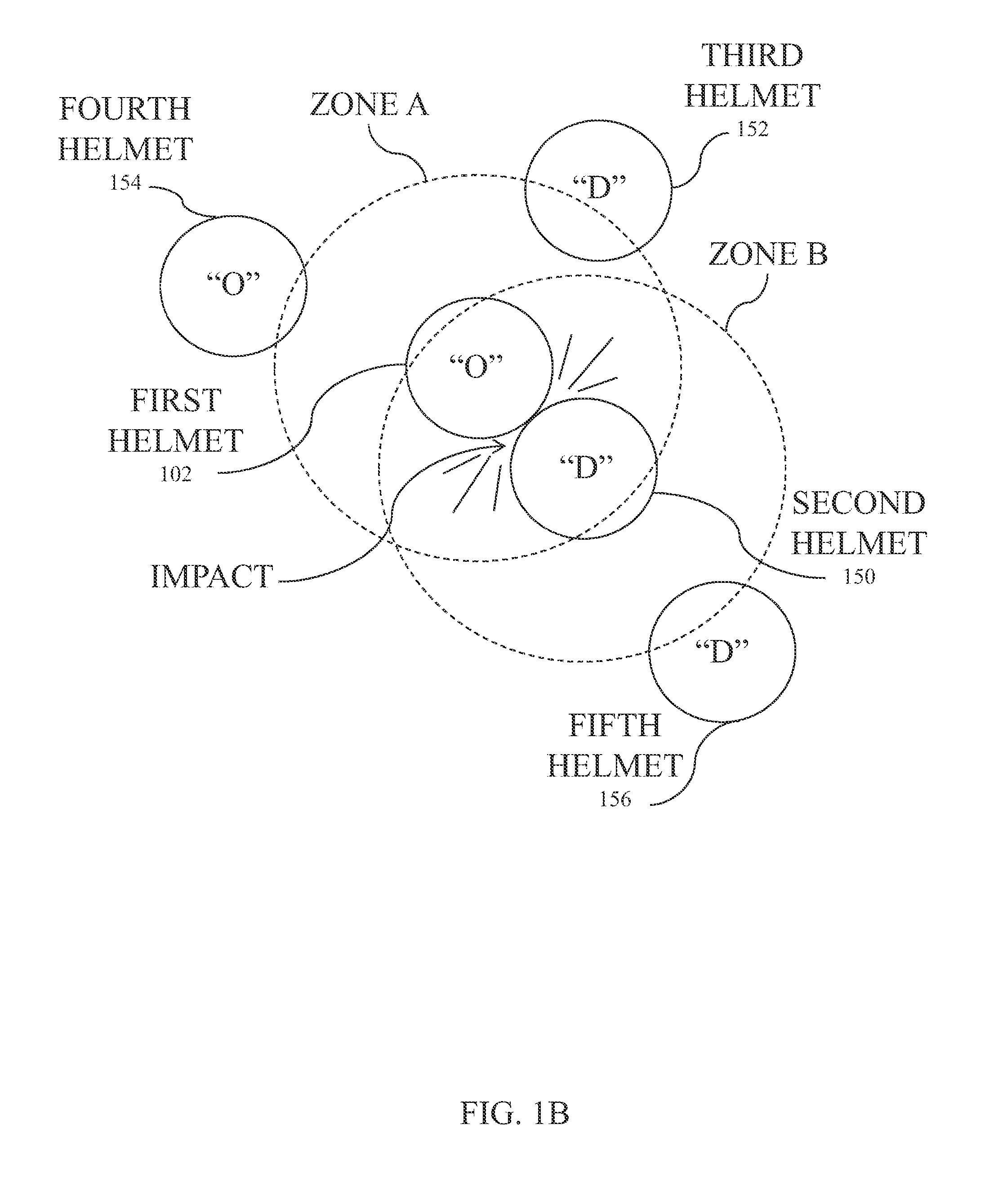System and method for the detection of helmet-to-helmet contact
a helmet and contact technology, applied in the field of helmet-to-helmet contact detection system, can solve the problems of only transmitting proximity detection results, two helmets having the same timestamp, and a greater likelihood of colliding, so as to minimize the occurrence of false positive determinations, the effect of minimizing false positives and reducing the probability of colliding
- Summary
- Abstract
- Description
- Claims
- Application Information
AI Technical Summary
Benefits of technology
Problems solved by technology
Method used
Image
Examples
Embodiment Construction
[0036]FIGS. 1A through 1D are diagrams depicting a system for detecting helmet-to-helmet contact. As shown in FIG. 1A, the system 100 comprises a first helmet 102, and an impact sensor 104 embedded in the first helmet to detect a helmet impact. A proximity sensor 106 is also embedded in the first helmet 102 to detect the proximity of another helmet. As used herein, the term “embedded in” should be understood to mean that the sensors may be inside the helmet between the inside and outside surfaces, attached to an inside surface of the helmet, or an edge of the helmet. A non-transitory memory device 108 is embedded in the first helmet, and connected to the impact sensor 104 and proximity sensor 106, to record impact detection results and proximity detection results. Alternatively, some of the components mentioned herein may be attached to padding or clothing worn by a player, and connected to helmet-embedded components via a hardwired or wireless connection. In one aspect, the memory ...
PUM
 Login to View More
Login to View More Abstract
Description
Claims
Application Information
 Login to View More
Login to View More - R&D
- Intellectual Property
- Life Sciences
- Materials
- Tech Scout
- Unparalleled Data Quality
- Higher Quality Content
- 60% Fewer Hallucinations
Browse by: Latest US Patents, China's latest patents, Technical Efficacy Thesaurus, Application Domain, Technology Topic, Popular Technical Reports.
© 2025 PatSnap. All rights reserved.Legal|Privacy policy|Modern Slavery Act Transparency Statement|Sitemap|About US| Contact US: help@patsnap.com



